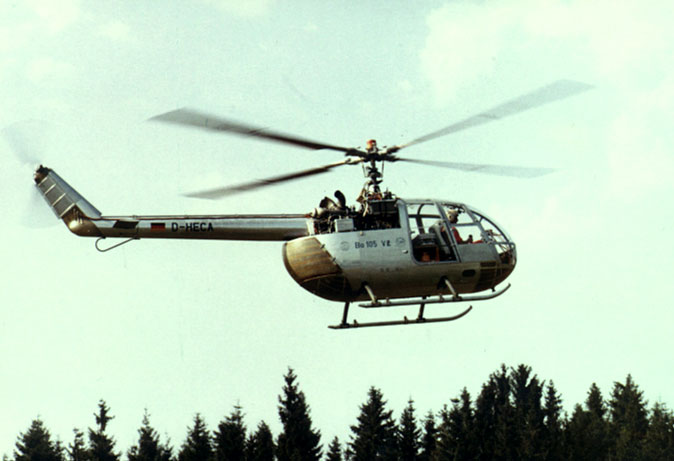
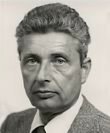
16 February 1967: At Ottobrun, Germany, test pilot Wilfried von Engelhardt made the first flight of the Bölkow-Entwicklungen KG Bo-105 prototype V-2, D-HECA, a twin-engine, rigid rotor helicopter. Baron von Engelhardt took off at 5:04 p.m. The flight lasted 20 minutes. D-HECA was the second prototype. The first one was destroyed by ground resonance during pre-flight testing.
Messerschmitt AG merged with Bölkow-Entwicklungen KG in June 1968, becoming Messerschmitt-Bölkow. The following year, the new company merged with Blohm & Voss to become Messerschmitt-Bölkow-Blohm KG, or MBB. The Bo-105 A entered production in 1970. A number of civil and military variants followed.
 The Bo-105 is a 5-place light helicopter powered by two turboshaft engines. It has a four-bladed rigid (or hingeless) main rotor. This gives it a high degree of maneuverability, and it is capable of performing aerobatic maneuvers. The two-bladed tail rotor is mounted high on a pylon and gives exceptional ground clearance for a helicopter of this size. There are two “clam shell” doors located at the rear of the cabin section, giving access to a large flat floor. The helicopter has been widely used by military, law enforcement and as an air ambulance.
The Bo-105 is a 5-place light helicopter powered by two turboshaft engines. It has a four-bladed rigid (or hingeless) main rotor. This gives it a high degree of maneuverability, and it is capable of performing aerobatic maneuvers. The two-bladed tail rotor is mounted high on a pylon and gives exceptional ground clearance for a helicopter of this size. There are two “clam shell” doors located at the rear of the cabin section, giving access to a large flat floor. The helicopter has been widely used by military, law enforcement and as an air ambulance.
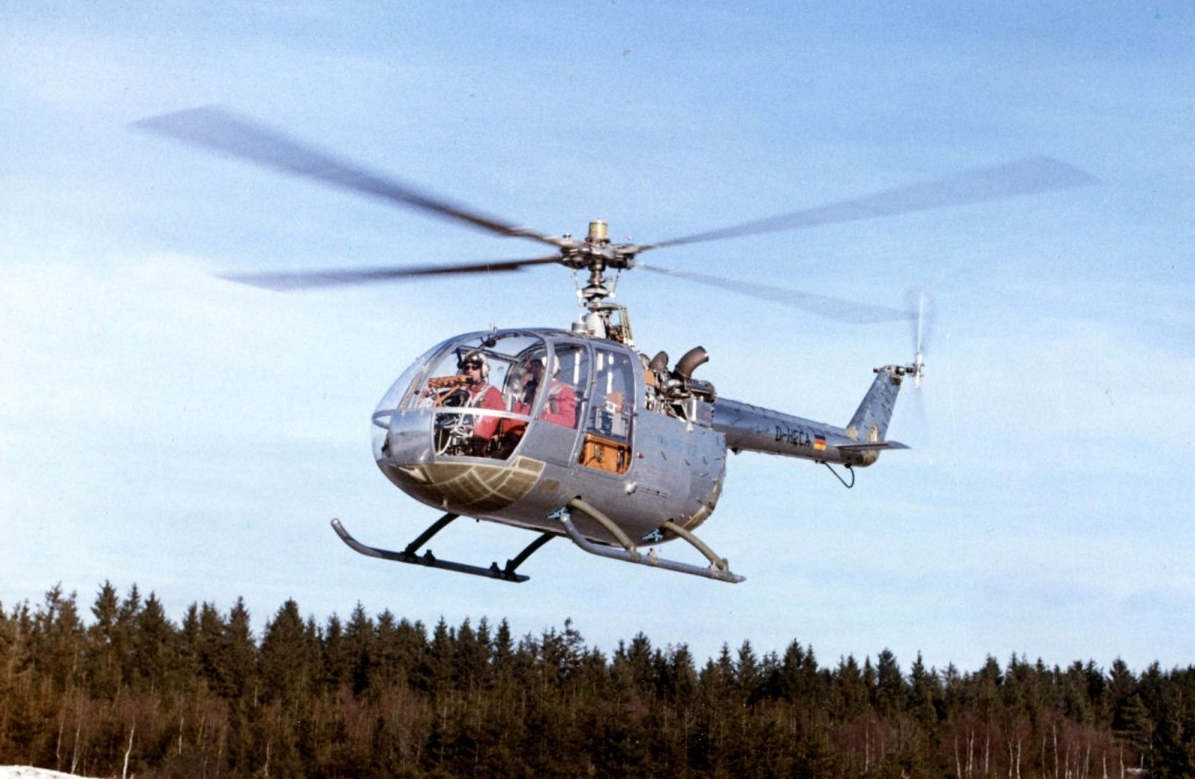
The Bo-105 is 11,86 meters (38 feet, 10.9 inches ) long with rotors turning. The fuselage is 8,81 meters (28 feet, 10.9 inches) long, with a maximum width of 1,58 meters (5 feet, 2.2 inches). The helicopter’s overall height is 3.00 meters (9 feet, 10 inches). The helicopter has an empty weight of approximately 1,276 kilograms (2,813 pounds), depending on installed equipment, and maximum takeoff weight of 2,100–2,500 kilograms (5,512 pounds), depending on variant.
The diameter of the main rotor is 9,84 meters (32 feet, 3.4 inches). The main rotor follows the American practice of turning counter-clockwise as seen from above. (The advancing blade is on the right.) It operates at 416–433 r.p.m. (361–467 r.p.m. in autorotation). The tail rotor diameter is 1,90 meters (6 feet, 2.8 inches). It turns clockwise as seen from the helicopter’s left side. (The advancing blade is below the axis of rotation.)
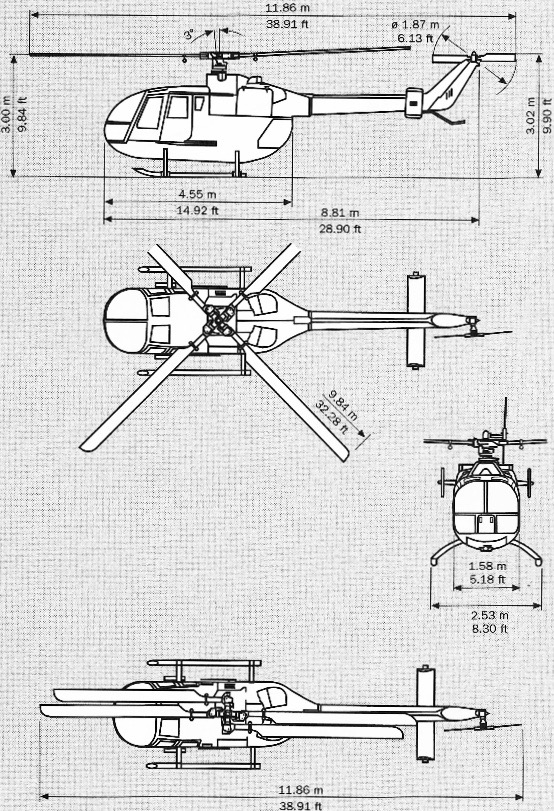
![]() The prototype was powered by two Allison 250-C18 turboshaft engines, with increasingly more powerful 250-C20, -C20B and C-28C engines being added through the production run. The Allison 250-C18 is a 2-spool, reverse-flow, gas turbine engine with a 6-stage axial-flow, 1-stage centrifugal-flow, compressor section, and a 4-stage axial-flow turbine (2-stage gas producer, and 2-stage power turbine). The 250-C18 is rated at 317 shaft horsepower at 51,600 r.p.m., N1 (6,000 r.p.m. N2).
The prototype was powered by two Allison 250-C18 turboshaft engines, with increasingly more powerful 250-C20, -C20B and C-28C engines being added through the production run. The Allison 250-C18 is a 2-spool, reverse-flow, gas turbine engine with a 6-stage axial-flow, 1-stage centrifugal-flow, compressor section, and a 4-stage axial-flow turbine (2-stage gas producer, and 2-stage power turbine). The 250-C18 is rated at 317 shaft horsepower at 51,600 r.p.m., N1 (6,000 r.p.m. N2).
The helicopter’s cruise speed is 127 miles per hour (204 kilometers per hour) and maximum speed (VNE) is 135 knots (155 miles per hour/250 kilometers per hour) at Sea Level. The service ceiling is 17,000 feet (5,180 meters). The Bo-105 C has a maximum fuel capacity of 580.0 liters (153.22 U.S. gallons), of which 570.0 liters (150.58 U.S. gallons) are usable. The range is 691 miles (1,112 kilometers.
The original Type Certificate for the Bölkow Bo-105 A was issued 13 October 1970. Since then, the Bo-105 series has been produced in Germany, Canada, Spain, Indonesia and the Philippines. More than 1,500 were built.
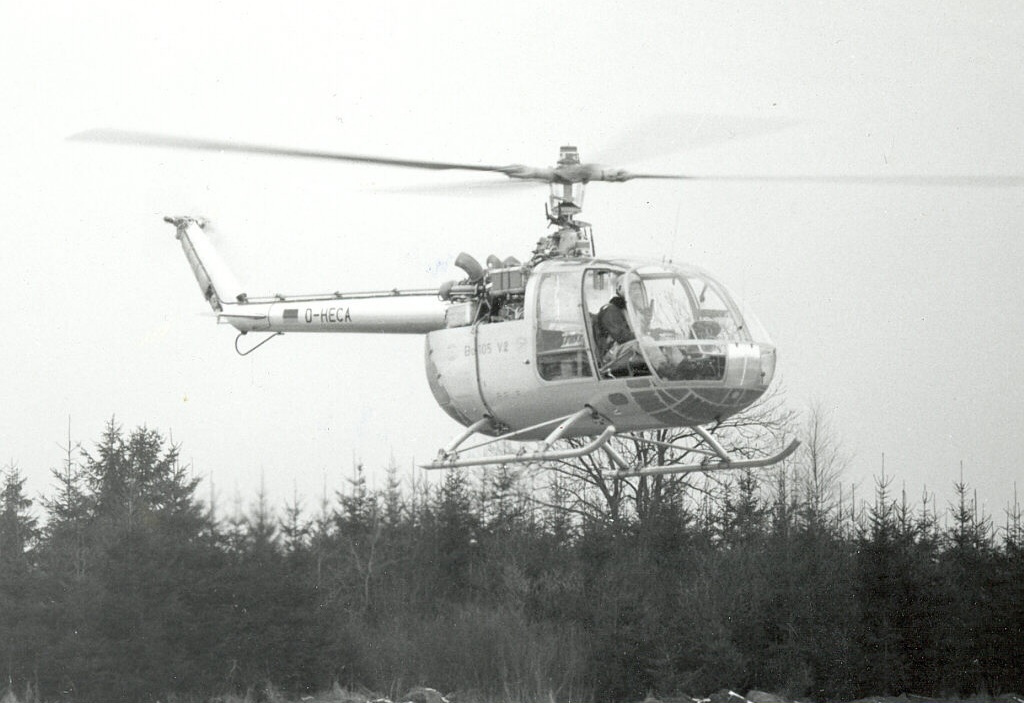
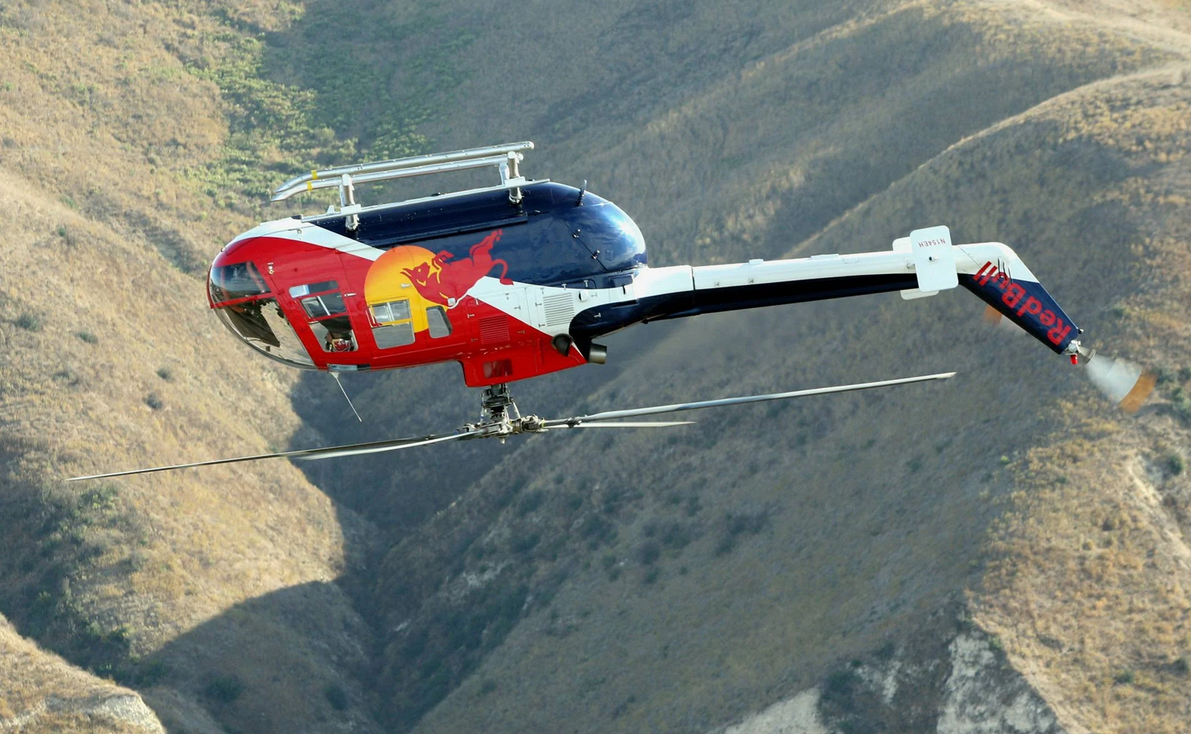
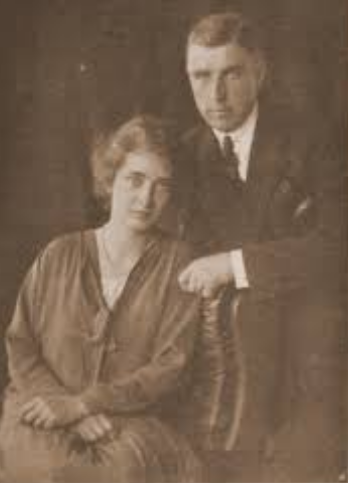
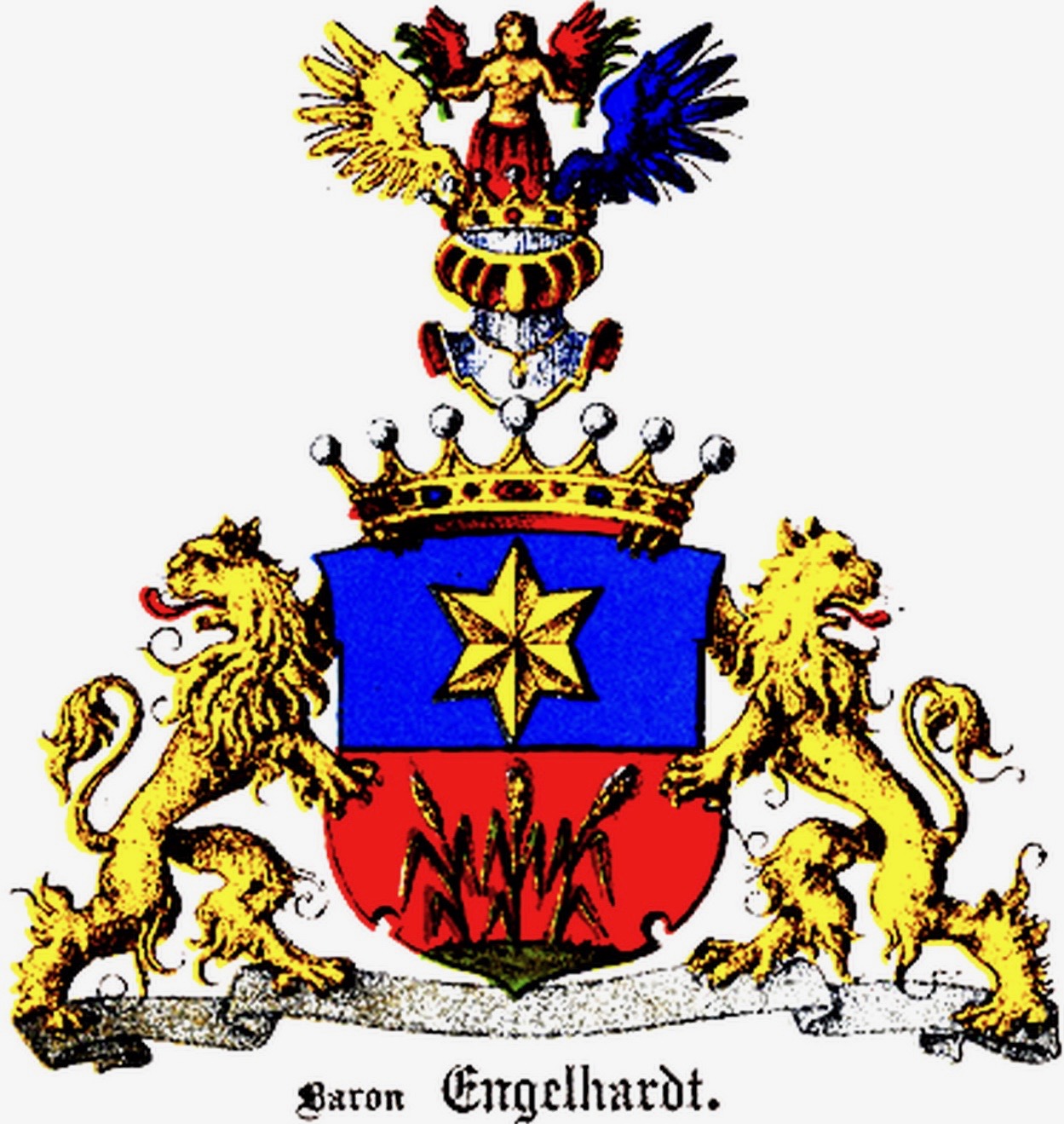 Wilhelm Friedrich Franz Eugen Baron von Engelhardt was born at Schloss Liebenberg, north of Berlin, Germany, 11 September 1928. He was the son of the Rudolf Robert Baron von Engelhardt and Ingeborg Maria Alexandrine Mathilde Baroness Engelhardt (Gräfin zu Eulenburg), and the grandson of Friedrich-Wend Fürst zu Eulenburg-Hertefeld, Count of Sandels.
Wilhelm Friedrich Franz Eugen Baron von Engelhardt was born at Schloss Liebenberg, north of Berlin, Germany, 11 September 1928. He was the son of the Rudolf Robert Baron von Engelhardt and Ingeborg Maria Alexandrine Mathilde Baroness Engelhardt (Gräfin zu Eulenburg), and the grandson of Friedrich-Wend Fürst zu Eulenburg-Hertefeld, Count of Sandels.
Wilhelm von Engelhardt had an early interest in aviation. His stepfather, Generalmajor Carl-August von Schoenebeck, a World War I ace, commanded the Luftwaffe flight test agency at Flugplatz Rechlin-Lärz, Rechlin, Germany. Von Englehardt was able to meet a number of well known German pilots, some of whom were guests at the family home. At the age of 16, he began flight training in gliders.
With the approach of the Soviet Red Army, von Engelhardt and his family fled to Austria. (General Shoenebeck was held as a prisoner of war until 1948.) He trained in hotel management in Salzburg. Following his release from Allied custody, General Schoenebeck formed Luftfahrt-Technik, a distributor for several aircraft manufacturers, including Hiller Helicopters.
With the assistance of General Schoenebeck, in the early 1950s von Engelhardt went to Paris, France, to train as a helicopter mechanic. He next became a helicopter pilot, then flight instructor, in 1958. He flew the Hiller 12, the Bell 47, and the gas turbine-powered Sud-Ouest Djinn. Von Engelhardt flew the SNCASE SE.3130 Alouette II in Papua New Guinea, 1961–1962, then returned to France where he trained as a test pilot at École du personnel navigant d’essais et de réception (EPNER) at Istres.
Von Engelhardt was recommended as test pilot for the Bölkow-Entwicklungen KG Bo-46, by the helicopter’s rotor system designer, Hans Derschmidt. The Bo-46 was an experimental high-speed helicopter. Von Engelhardt made the first liftoff of the prototype aircraft 14 February 1964.
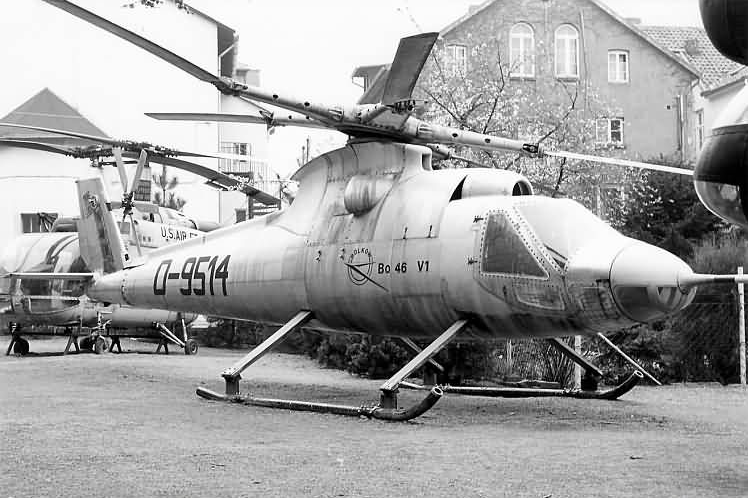
Wilhelm von Engelhardt served as Bölkow’s chief test pilot, from 1962 to 1973. He then became the company’s sales director and director of customer service training.
With the Soviet occupation of eastern Germany, the village where Baron von Engelhardt was born was seized. It later came under the jurisdiction of the German Democratic Republic. Following the reunification of East and West Germany, the government of the Federal Republic of Germany held control of Schloss Liebenberg.
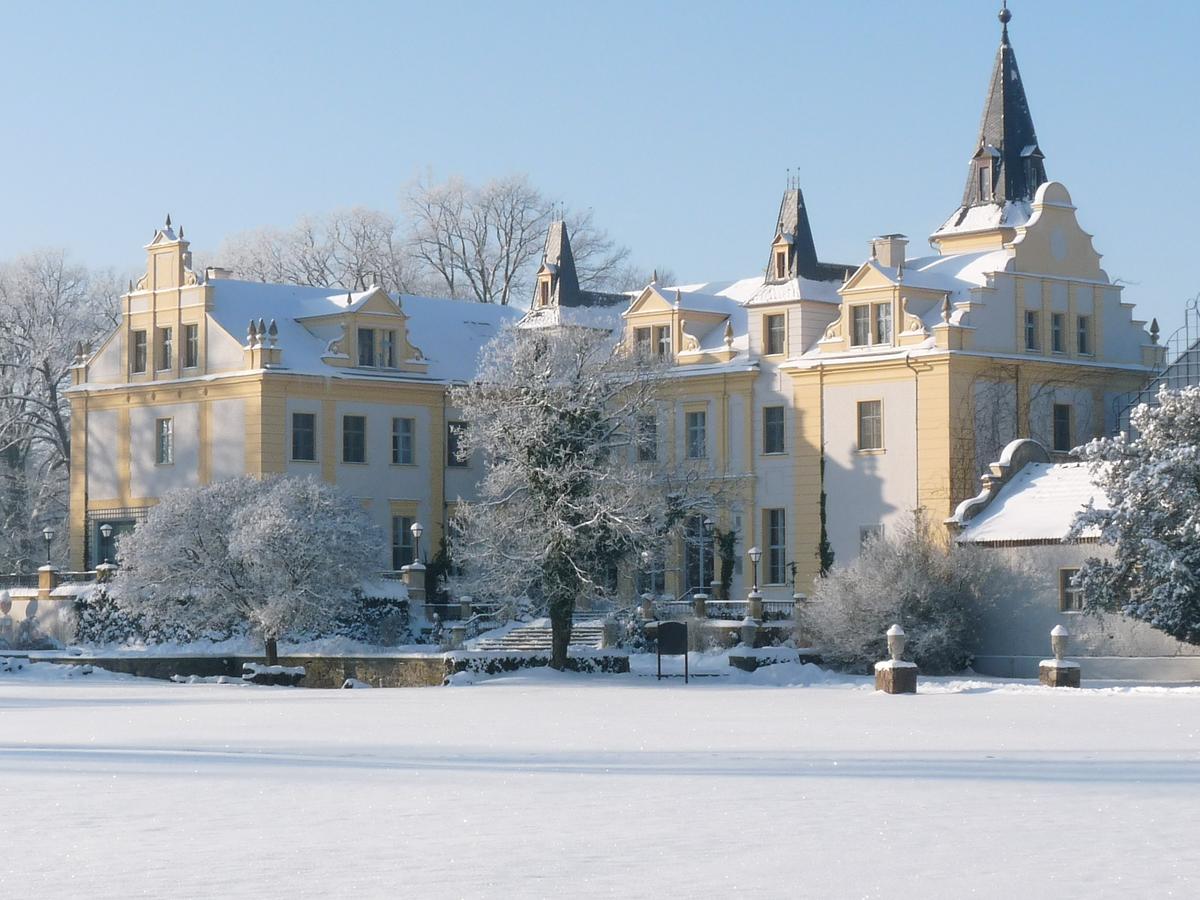
In 1996, without informing the local population, the Federal Office for Special Tasks Related to Unification, government’s privatization agency, placed the entire village, including the castle, the 13th century church, all the homes, farm buildings and stable, for sale. The asking price was so high that it was impossible for the villagers to come up with enough money to buy their home town. There was considerable outcry from the villagers, who said that they felt as if they, too, had been put on sale.
Baron von Engelhardt, who was living in a rented coach house on the estate that his family had owned for more than 300 years, gained international recognition for his attempts to negotiate a reasonable outcome.
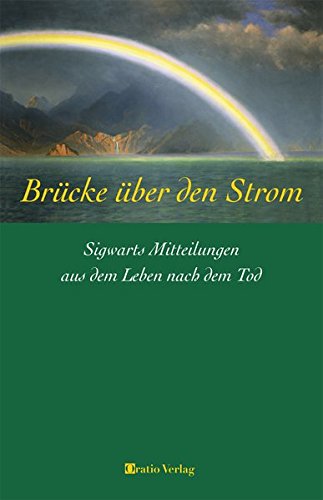 With his wife, Evamaria, he edited and published Brücke über den Strom, (“Bridge over the Stream”), the letters of his cousin, Sigwart Botho Philipp August zu Eulenburg, Count of Eulenburg, a musical composer who was killed during World War I.
With his wife, Evamaria, he edited and published Brücke über den Strom, (“Bridge over the Stream”), the letters of his cousin, Sigwart Botho Philipp August zu Eulenburg, Count of Eulenburg, a musical composer who was killed during World War I.
Wilhelm Friedrich Franz Eugen Baron von Engelhardt died 24 January 2015, at the age of 86 years.
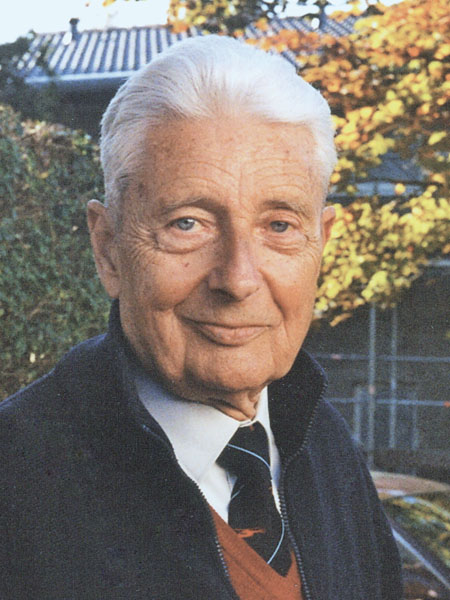
© 2019, Bryan R. Swopes
http://static.thisdayinaviation.com/wp-content/uploads/tdia/2012/12/COVER-Carl-A..jpg
This is not a photo of Col. Carl A Cover of Douglas Aircraft
I stand corrected. The photo is of C.R. Smith. I located a photograph at Wright State University that identifies one of the four men as Carl Anson Cover. I will use that one.
I have a few photos of my grandfather if you need one to use in its place let me know
Sure!
Engelhardt’s date of death was January 14, 2015.
Please see: https://upload.wikimedia.org/wikipedia/commons/e/ec/Gedenktafel_in_Liebenberg.JPG
According to this Wikipedia article, he died 24 January 2015: https://en.wikipedia.org/wiki/Wilfried_von_Engelhardt
Yes, but the German Wikipedia is – according to the tombstone data – also “14. Januar 2015”.
A little glitch: It´s “Gräfin zu Eulenburg”, not Eulenbrug.
And the Bo-105 is my all time favourite, since one of those saved my life in 1991 (fast response air ambulance; ADAC Luftrettung, callsign “Christoph 25”, base Siegen/NRW). By ambulance car it would have been too late, they literally dropped me on the OP-table just in time for the first (of several) reanimation(s)… That´s why i´m so into rescue-stories, especially with helicopters.
Best known for piloting the 105 is another guy: Karl “Charly” Zimmermann, the first german to be awarded with the “FAI Gold Rotorcraft Medal” (1993). Here two Videos of him, first his display at the 1986 World Championship (Freestyle):
https://www.youtube.com/watch?v=93zy3OqXMPw
And another display, in “the woods” 😉 :
https://www.youtube.com/watch?v=kly8soer0hY
(3:43 minutes; only 240p resolution; and half of the video with some “contemporary music”, but at least half with the real sound; there are better videos of this flight in terms of resolution, but sadly with even worse music overlay – one of them with the “Airwolf”-theme… ;-))) )
Keep in mind that the machines in both videos were STOCK. NO mayor mods whatsoever!
Seeing these and other videos of this extremely capable machine it’s actually surprising that only about 1600 were built… (yes i know they were much more expensive compared to Bell etc)
Postscript to my yesterdays comment: Two glitches – there should have been two videos of Mr. Zimmermann, but i forgot to include the link to the 2nd Video (and it is not available anymore anyway…).
And the Pilot in the _now_ 2nd and last Video is MMB chief test pilot Siegfried Hoffmann (clearly visible at the end in some of the higher-resolution-vids (with horrible music) at the end of the Video, when he looks over to the camera), not Mr. Zimmermann.
Sorry for the glitch.
And last but not least: Many “sources” on the internet claim, that the pilot in this now 2nd Video was Mr. Zimmermann, and that he was killed in an accident in Minsk.
This is a mixup – as stated, this is Mr. HOFFmann, and the Pilot killed in Minsk (there are Videos on the Net depicting this tragedy) was Mr. Zimmer (not ZimmerMANN).
Bryan, have you ever flown a helicopter with a semi-rigid rotor?
Oh, yes. The Bell Model 47 and Bell 204, 205, 206 and 212 rotor systems are considered to be semi-rigid. They are rigid in plane (no lead-lag hinges) but are able to “flap” due to there “teetering” hinge.
Oh dear, – but interesting! Obviously lost in translation i chose the wrong term (“semi-rigid”), and now i ended up in a pretty interesting surf-session with the terms you gave me at hand! 😉
As i said before – it´s always very interesting to read the comments, too.
But initially i just wanted to know if you have ever flown a helicopter with a “hingeless rotor” system (i found this term in the en:wp-page for the 105, hope it´s now the correct term 😉 ) like the 105?
I have flown the Aérospatiale AS 350 B and D A-Star, and the AS-355 Twin Star. Their Starflex rotor head and composite rotor blades are referred to as hingeless.